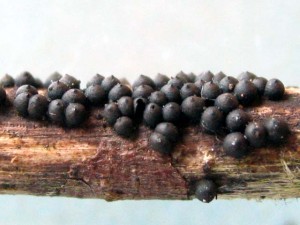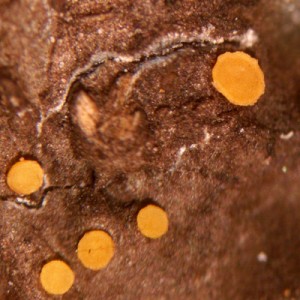In my previous bog post, I considered the subject of overlooked fungi. Now I’d like to consider fungi that are underlooked — i. e., those that are either ignored or cause the viewer to avert his eyes. It seems to me that people who underlook fungi often do so because of an attitude instilled in them by Hollywood.
I can almost see the incredulous look on the reader’s face. Hollywood can be blamed for plenty of sins, but can it be blamed for a prejudice against certain fungi? Why not? Create a mental picture for yourself of a typical Hollywood actor’s face. Star, starlet, or mere extra, that face is doubtless the consequence of a botox treatment, excessive makeup, plastic surgery, or some other form of reconstitution. Even as such faces excite a fantasy-making mechanism in the viewer, they also make that same viewer feel his own face is unattractive, whereas his own face is simply natural.
Well, that’s the way it is with movies, you might say. Whereupon I would ask you to screen (for example) Alexander Dovzhenko’s 1930 silent film Zemlya (Earth), and you’d see an alternative to Hollywood beautification, so-called. Dovzhenko’s characters are Ukrainian muzhiks (peasants) with scraggly beards, rotund bodies, wrinkles, warts, and various disfigurements. In other words, they’re real.
Unfortunately, many people regard fungi from a Hollywood rather than a Dovzhenko perspective. Thus they gaze fondly only at certain species, usually agarics. How often does a corticioid (crust) fungus or a small black ascomycete win a photographic contest or appear on a website (except here!)? Instead, you tend to see brightly-colored Hygrocybes (the young Julia Roberts?), slender-stalked Amanitas (Mel Gibson in fighting mettle?), suppurating Lactarii, or Leptonia carnea. Mushroom photographer Christian Schwarz gushingly calls the last of these “indescribable,” which I suppose means that it has a pretty face.
As for myself, I tend to gaze at fungi from a Dovzhenko perspective. I delight in the tiny black pebbles of a Rosellinia; I clap my hands at the sight of a Kretzschmaria (=Ustulina) deusta, the so-called Carbon Cushion; and I gasp with pleasure every time I encounter Peridoxylon (=Camarops) petersii, which looks not unlike a dog’s nose (for a comparison of the two, see p. 93 of my book Fascinating Fungi of New England). If any of these species could talk, it might tell you that beauty is in the eyes of the beholder. The Peridoxylon might also tell you that it’s quite proud of its perithecia (asci-bearing structures), and that perhaps you should appreciate them, too.
If I happen to be in the woods, I’ll investigate barkless white pine logs in the hopes of finding Pseudomerulius aureus, a species whose yellowish surface is as wrinkled as a Dovzhenko peasant’s face. And if I do in fact find this captivating fungus, I might repeat my old friend Sam Ristich‘s favorite utterance upon finding an interesting or unusual species — “Hallelujah!”
Images from this Dovzhenko exhibition and this website of Japanese fungi by Kutsuna Masanori.



